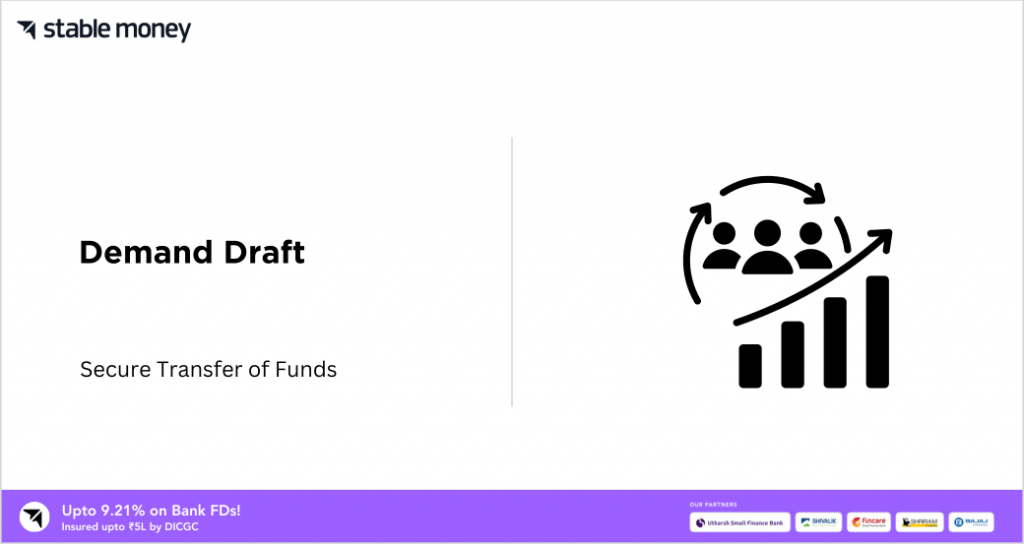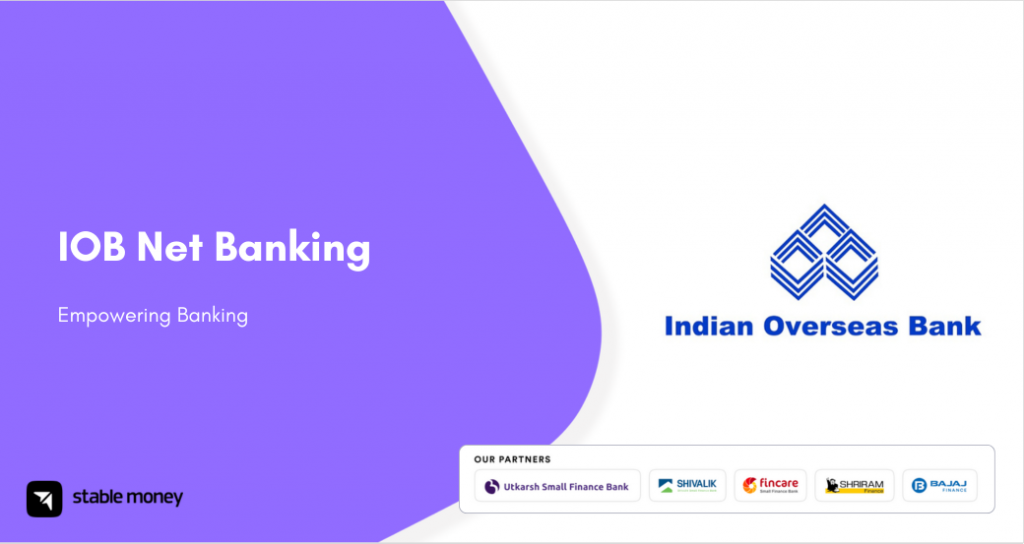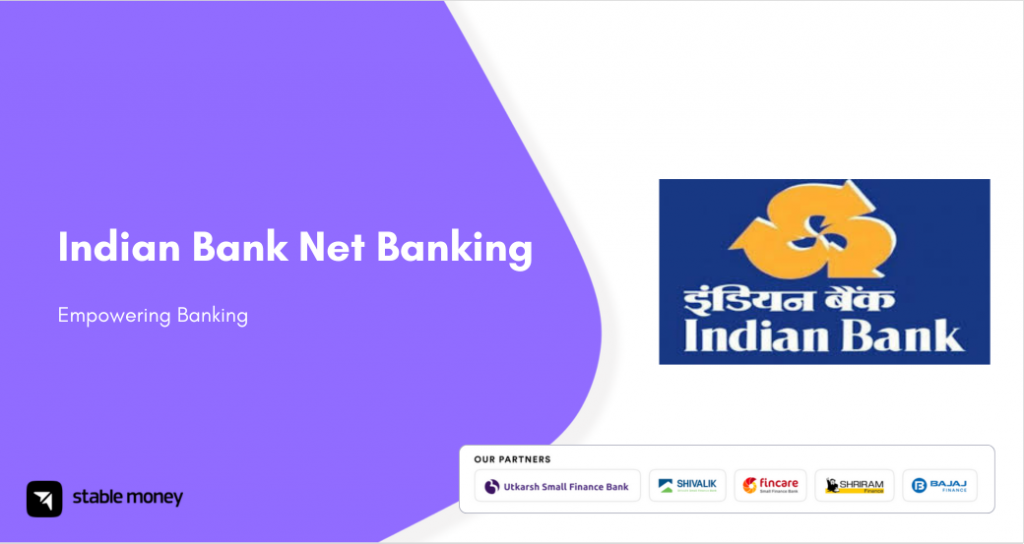
Demand draft is a widely used financial instrument for funds transfer between individuals and businesses located in different places. It provides a convenient way to make secure payments without having to carry cash or wait for cheque clearance. This blog aims to provide a simple overview of demand draft, its types, process of issuance and important factors to know when opting to pay through this method.
What is Demand Drafts
A demand draft is a payment instrument similar to a check that allows the receiving party to collect the funds from the issuing bank directly instead of waiting for the buyer’s check to clear. It is a financial tool that enables users to transfer funds from one bank account to another without directly transferring funds between the accounts. The receiving person can directly deposit the demand draft into their bank and collect the money without waiting for the other party’s check to clear.
Types of Demand Drafts
There are a few main types of demand drafts used for different purposes:
1. Local Demand Draft
Used when beneficiary’s bank is in the same city. Funds are usually transferred quicker than outstation DDs.
2. Outstation Demand Draft
Issued when beneficiary’s bank is in a different city. Takes some more time for funds to be cleared during processing.
3. Multicity Demand Draft
Accepted for deposit at multiple locations across India instead of a single branch like regular DDs.
4. Electronic Demand Draft
Also called e-DD, it is the digital version of physical DD issued online without any paper involvement.
5. Recurring Demand Draft
Used for regular periodic payments like rent, installment etc. Issued for a fixed number of occurrences over a period of time.
Characteristics & Component of Demand Drafts
1. Characteristics of Demand Draft
- Acts as substitute for checks and cash for fund transfers.
- Drawn on issuer’s bank account and guarantees immediate payment to beneficiary.
- Beneficiary can directly deposit it into their bank account without waiting.
- Carries low risk of bounced payment compared to personal checks.
2. Components of Demand Draft
- Details of issuing bank branch including name and address.
- Demand draft number for identification.
- Date of issue of the demand draft.
- Name of beneficiary who will receive funds.
- Payable branch details where beneficiary can deposit for collection.
- Amount payable in numbers and words both.
- Authorized signatory of issuing bank.
Working of Demand draft
The working of a demand draft is straightforward. The buyer visits their bank and submits a demand draft application along with application fees and payment amount. The bank then issues a demand draft in favor of the seller/beneficiary. This can be deposited into the beneficiary’s bank account, allowing immediate access to funds. Once the beneficiary deposits it, the banker forwards it to the buyer’s bank for clearance and amount is transferred, making it a convenient way to make payments securely.
Steps to Issue Demand Drafts
To transfer funds through demand draft, one first needs to issue it from their bank. Here are the basic steps to issue a demand draft. The process of issuing a demand draft is simple. The issuer just needs to visit their bank branch with relevant details.
- Visit your bank branch with required details like beneficiary name and address.
- Fill the DD application form providing these details.
- Mention the amount in words and figures that needs to be paid.
- Pay applicable fees and charges.
- Verify all details provided before signing the application.
- Bank official will then issue a demand draft against payment.
Charges for Demand Drafts
There are generally two types of charges involved for issuance of a demand draft. The drawer has to pay issuance fees to the bank which varies based on the bank and location. For example, SBI charges Rs. 20 plus GST for local DDs. There are also collection charges payable to the bank by beneficiary on depositing the DD, which is a certain percentage of the instrument amount. These charges are important to consider while opting for demand drafts for funds transfer.
Demand Draft Validity
The validity of a demand draft is an important factor to consider. As per RBI guidelines, a demand draft issued by a bank is valid for 3 months from the date of issue. Within this time period, the beneficiary can deposit the DD into their bank account for clearing. If the DD is not deposited within 3 months, it is considered stale and will not be honored. Customers must ensure the DD is deposited before the expiry date for successful funds transfer.
Modes of payment Available for Demand Draft
1. Cash
Demand draft can be issued by paying cash at the bank branch counter. This is the most commonly used mode.
2. Cheque
Payment can also be made through cheque drawn on the same bank or other bank. Funds may be blocked until cheque clearance.
3. Debit Card
Many banks allow issuing DD by paying through their own debit card at branch or online. Immediate debit from linked account.
4. IMPS/NEFT
Some banks accept IMPS/NEFT transfer to their designated bank account for issuing demand draft online or at branch.
Difference Between – Demand Draft & Online Payment System
When making payments there are different options available. Two popular ones are demand draft and online payment systems. Let’s compare the key differences between these two:
| Demand Draft | Online Payment System |
|---|---|
| A demand draft is a written order from a bank to pay a specific amount to the person/company mentioned on it. It can be issued physically. | An online payment system allows you to make payments directly from your bank account to another person/business online via internet banking or a payment gateway. |
| Processing time is longer as the physical draft has to be issued and sent via post/courier before it can be deposited. | Payment is almost instant as it is done online without any physical paper movement. |
| There are bank charges for issuing the demand draft. | There may not be any charges for doing online fund transfers between bank accounts. |
| Risk of loss/delay if draft is lost in transit. | No risk of document getting lost as the transaction happens online. |
Overall, the online payment system seems to be more convenient and efficient compared to demand drafts. With online payments, you don’t have to physically visit the bank or wait for documents to be delivered. Payments happen instantly with the click of a button. While demand drafts are still useful in some cases, online payments are definitely a better option for making routine payments in this digital era due to benefits like speed, convenience and security.
What Should I Do If My Demand Draft Is Lost or Stolen? Any risk involved with DD
If your demand draft gets lost or stolen, you should immediately inform your bank about it. The bank can then put a “stop payment” on that lost demand draft, preventing anyone else from encashing it. However, there is still a risk of someone fraudulently accessing the draft details and misusing it. So it’s always better to carry demand drafts safely and track their status to avoid any loss or fraud. Informing the bank promptly is important to limit your liability in case a lost DD is encashed by someone else.
What is Demand Draft Cancellation?
A demand draft cancellation refers to stopping payment on a demand draft that has already been issued but not encashed yet. There may be times when you need to cancel an issued DD, for example if the transaction is cancelled.
Procedure of Demand Draft Cancellation
The bank allows cancelling DDs under certain conditions before it is paid to the beneficiary. Some key points about DD cancellation:
- Banks charge a fee for cancelling a DD, usually a certain percentage of the DD amount subject to a minimum charge. This charges varies across banks.
- To cancel a DD, you need to submit a cancellation request letter to the issuing branch. Mention the DD number, date, amount and reason for cancellation.
- Along with the letter, submit the original non-encashed DD if possible. If not, you may need to provide an indemnity bond agreeing to indemnify the bank in case of any loss.
- The branch will confirm from their records that the DD is still outstanding and not paid. Then they will initiate the cancellation process which may take 3-5 working days.
- Once cancelled, the DD cannot be encashed anymore. But you also do not get back the amount until confirmation of cancellation comes from the clearinghouse.
Guidelines While Using Demand Drafts
Demand drafts carry some risk if not handled properly. To ensure security of funds, it is important to follow necessary safety guidelines.
- Keep DDs in a secure place and don’t carry multiple DDs together to minimize loss risk.
- Don’t sign blank DDs until required and trace delivery to beneficiary.
- Track DD status online or through bank before cancellation deadline.
- Inform bank immediately about any loss/theft and provide particulars for cancellation.
- Shred or tear DD securely after confirming encashment to prevent misuse.
Advantages & Disadvantage of Using Demand Drafts
Here are the advantages and disadvantages of demand drafts:
1. Advantages
A demand draft provides some benefits over other payment modes:
- It acts as proof of payment for auditing purposes.
- There is assurance of payment once encashed by beneficiary.
- Useful when exact amount is to be transferred without decimals.
- Can be issued up to a high value without net banking limits.
2. Disadvantages
While demand drafts have their uses, they also have certain drawbacks:
- Physical movement means higher processing time than online payments.
- Bank charges are applicable for issuing the demand draft.
- Risk of loss or delay if demand draft is lost in transit.
- Need to visit bank branch for obtaining a demand draft.
- Cannot get immediate payment confirmation like online modes.
- Tracking status requires checking with banks before deadline.
Final Word
Demand draft is a reliable payment tool that facilitates instant money transfer anywhere in India in a cost-effective manner. Being aware of the process, charges and validity helps users leverage this facility efficiently. Its various features and options fit different transaction needs. Using demand draft requires minimal documentation while ensuring security for both payer and payee.
FAQs
A cheque allows individuals to pay from their bank account, while a demand draft is like a bank guarantee where the bank pays from its funds.
Visit your bank branch, fill a DD form with payee name, amount and submit required ID proof. The bank will issue a DD for a nominal charge.
Yes, you can get a DD from any bank branch. However, some banks may have a limit on maximum amount of non-customer DDs that can be issued.
A DD payment is safer than cheque as it cannot bounce like a cheque. Also, only banks can issue DDs unlike cheques which individuals also issue.
Disclaimer
This article is solely for educational purposes. Stable Money doesn't take any responsibility for the information or claims made in the blog.

